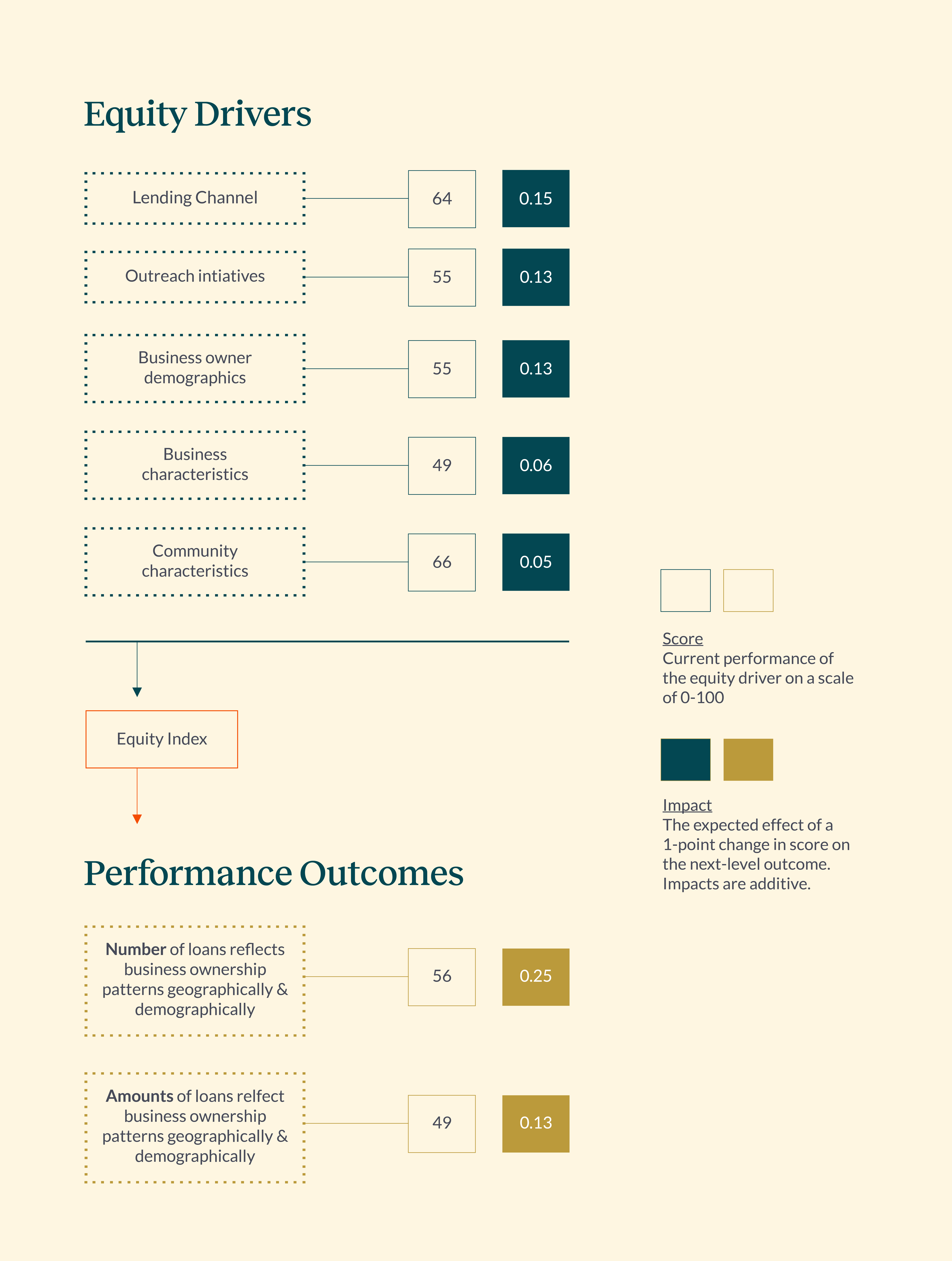Predictive Equity Index Model
The product uses machine learning and predictive analytics to understand key drivers of equity in the distribution of PPP loans. This methodology allows for the creation of a cohesive dataset, enabling an in-depth assessment of county-level equity, as well as an understanding of how future actions can serve to impact anticipated levels of equity in future funding efforts. Taken together, this product allows for policy makers at the county, state, and national-level to take county-level action maximizing the impact of federal dollars on communities the investments aim to serve.
Research Methodology
To accurately build out a predictive model assessing equity in PPP loan distribution, we first needed to solve for obstacles presented by absent data and disparate datasets. Data integrity is key to us at Werklabs and The Mom Project. In crafting our model, we take extra care to ensure it relies on ethical, socially responsible, and accurate data management. To accomplish this priority, we took a two pronged approach:
First, we create a community characteristics dataset by merging government data sources, leveraging supervised learning techniques to estimate business ownership demographic patterns at the county level. Supervised learning is a group of algorithms used to emulate a target given an input dataset. We can then use sample county-level demographic and business ownership data to fill in the gaps present between datasets. This allows us to estimate business ownership characteristics from county demographic data.
Second, we merge this community characteristics dataset with PPP data to create a master dataset, capturing characteristics associated with each loan disbursed. This aggregate dataset, is what our predictive model uses to quantitatively capture the impact of each of the variables on equity, ideally at the county, state, and national level

The Product User
The product is intended to be used by county, state and national-level policy makers in order to understand not only how PPP loans have been distributed but also how to make future distributions more equitable, using COVID-19 federal spending on PPP loans as a baseline to guide future actions in intentionally promoting equity in spending efforts.
Hypothetical Model
Creating a predictive model to assess equity in government spending

User-Centric Product Creation
To help shape our development of this product, we met with several user advocates designated by The Opportunity Project, specifically we met with Bina Shrimali, Research Manager in Community Development at the Federal Reserve Bank of San Francisco and Honorable Elbra Wedgeworth of First Bank in Lakewood, Colorado.
We developed our model with these lessons in mind, taking into account community demographics as well as patterns of business ownership. We examine PPP loan disbursement at the county level, using the extent to which the disbursement of PPP loans reflects business ownership patterns in each county to generate an equity score for each county. For instance, if 70% of businesses in a given county are owned by Black business owners, we would anticipate that approximately 70% of PPP loans in that county should have been granted to Black business owners.
We then examine how various factors at the community and lender level impact this equity score. This approach enables us to isolate the impact of factors such as type of lending channel or county-level demographic business ownership patterns on the equity score.
User Journey
- A need/desire to understand the distribution of PPP loans for a specific county
- Assess current performance of equity by analyzing the scores of drivers
- Manipulate driver scores to understand the expected impact of future actions or programming
- Determine future course of action based on greatest impact to equity

Public data & resources used in the development of our product
© 2021 Werklabs. All rights reserved.
